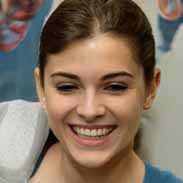CNIT 18000 exam 1 practice exam – Flashcards
Unlock all answers in this set
Unlock answersquestion
CH 1 Examples of company-wide applications, called ____, include order processing systems, payroll systems, and company communications networks. A. enterprise applications B. network operating systems (NOS) C. operating applications D. legacy systems
answer
A
question
CH 1 Over 40 years ago, a concept called Moore's Law accurately predicted that computer processing power would double about every ____. A. 2 months B. 12 months C. 24 months D. 48 months
answer
C
question
CH 1 Systems analysts use a process called ____ to represent company operations and information needs. A. JAD B. Scrum C. RAD D. business process modeling
answer
D
question
CH 1 Transaction processing (TP) systems ____. A. provide job-related information to users at all levels of a company B. simulate human reasoning by combining a knowledge base and inference rules that determine how the knowledge is applied C. process data generated by day-to-day business operations D. include e-mail, voice mail, fax, video conferencing, word processing, automated calendars, database management, spreadsheets, and high-speed Internet access
answer
C
question
CH 1 Knowledge management systems are called expert systems because they ____. A. provide job-related information to users at all levels of a company B. simulate human reasoning by combining a knowledge base and inference rules that determine how the knowledge is applied C. process data generated by day-to-day business operations D. include e-mail, voice mail, fax, video conferencing, word processing, automated calendars, database management, spreadsheets, and high-speed Internet access
answer
B
question
CH 1 A ____, or requirements model, describes the information that a system must provide. A. process model B. data model C. business model D. network model
answer
C
question
CH 1 A(n) ____ describes the logic that programmers use to write code modules. A. process model B. object model C. business model D. network model
answer
A
question
CH 1 ____ is a systems development technique that produces a graphical representation of a concept or process that systems developers can analyze, test, and modify. A. Prototyping B. Rapid application development C. Scrum D. Modeling
answer
D
question
CH 1 ____ is a systems development technique that tests system concepts and provides an opportunity to examine input, output, and user interfaces before final decisions are made. A. Scrum B. Prototyping C. Modeling D. Rapid application development
answer
B
question
CH 1 ____ methods include the latest trends in software development. A. Object-oriented analysis B. Agile/Adaptive C. Structured analysis D. Rapid application development
answer
B
question
CH 1 The ____ method of developing systems produces code that is modular and reusable. A. object-oriented analysis B. adaptive C. structured analysis D. rapid application development
answer
A
question
CH 1 Structured analysis is a traditional systems development technique that uses a series of phases, called the ____, to plan, analyze, design, implement, and support an information system. A. O-O B. SDLC C. MSF D. RUP
answer
B
question
CH 1 Whereas structured analysis treats processes and data as separate components, ____ combines data and the processes that act on the data into things called objects. A. the MSF B. the SDLC C. RUP D. O-O
answer
D
question
CH 1 Agile methods typically use a(n) ____model, which represents a series of iterations based on user feedback. A. gradual B. extreme C. spiral D. evaluative
answer
C
question
CH 1 When building an information system, all of the following basic guidelines should be considered EXCEPT ____. A. stick to an overall development plan B. identify major milestones for project review and assessment C. provide accurate and reliable cost and benefit information D. ensure that users are not involved in the development process
answer
D
question
CH 1 A systems analyst needs ____. A. solid technical knowledge and good analytical ability B. strong oral and written communication skills C. an understanding of business operations and processes D. all of the above
answer
D



